- Home
- The Element of Form in Art
- Geometric Forms
Geometric Form in Art - Try Something Different!
Geometric form in art can give us a new angle on our work which we may not have thought about before.
We're talking about 3-dimensional rather than 2-dimensional form - a geometric form drawn or painted on a flat surface giving the illusion of being 3-dimensional.
I've found some interesting artists to share with you - let's take a look...
Geometric Form in Art - The Sphere
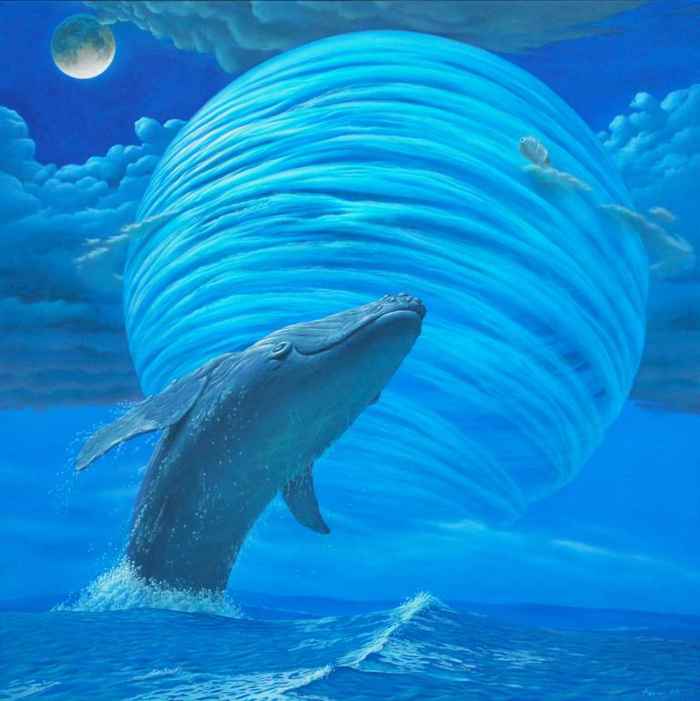 ©"Planet of Water - Whale" - acrylic on wood, Kazuaki Maitani
©"Planet of Water - Whale" - acrylic on wood, Kazuaki MaitaniWhat imagination Kazuaki Maitani has! This surreal painting brings up questions in our mind, doesn't it?
Has the whale been struggling to live in polluted waters? Does it see a chance for life on a pristine, new planet untouched by human interference?
What thoughts do you have on this work?
See the way he uses contour lines to encircle the water planet making it look spherical?
If you're good at realism, have you thought of trying something surrealistic? Putting objects together in an illogical, bizarre or unexpected way to evoke a dream-like quality?
Interested? Have a go - surprise yourself!
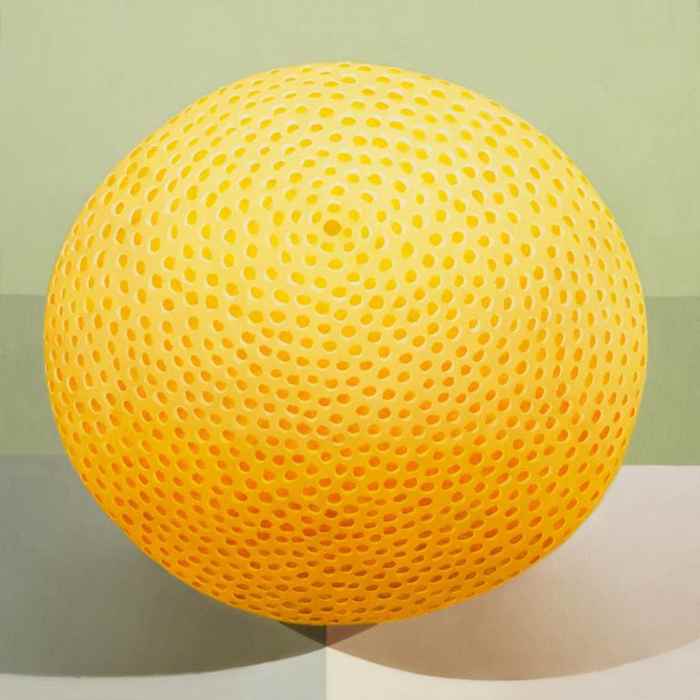 ©"Field 04. Grapefruit" oil on wood, Robert McPartland
©"Field 04. Grapefruit" oil on wood, Robert McPartlandWell, this grapefruit looks pretty spherical doesn't it? How does Robert McPartland do it? Shading and perspective does the trick!
Each little indentation is painted in perspective, emphasising the way they encircle the form, getting smaller and closer together the further away they are.
The light is coming from above, so to increase the solid feel of the sphere, Robert uses shading - darker as it turns away from the light.
I love what Robert does with backgrounds. They're never an afterthought, but always carefully planned to enhance the whole idea of the work.
See how the light is coming from two overhead sources? This causes the shadows to beautifully echo the overall circular shapes of the painting.
The Cube
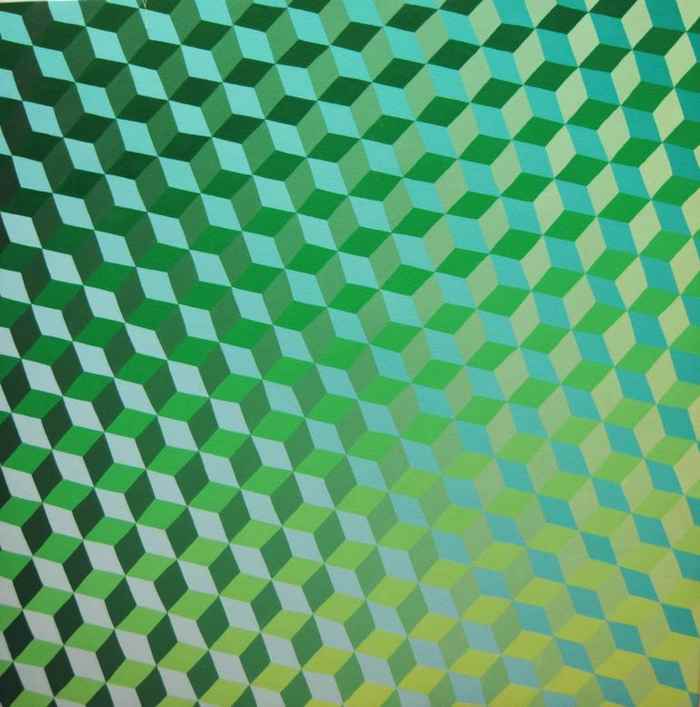 ©"Seisavar" acrylic on canvas, Jalid Melloul
©"Seisavar" acrylic on canvas, Jalid MelloulJalid Melloul says he loves to work with color and geometry in his paintings, and we can see both at work in this one.
It's intriguing to see how the cubes seem to change direction according to which color he uses on them. I love the sheen he gets on this painting too, almost as if it's metallic, but instead it's all done with color and tone!
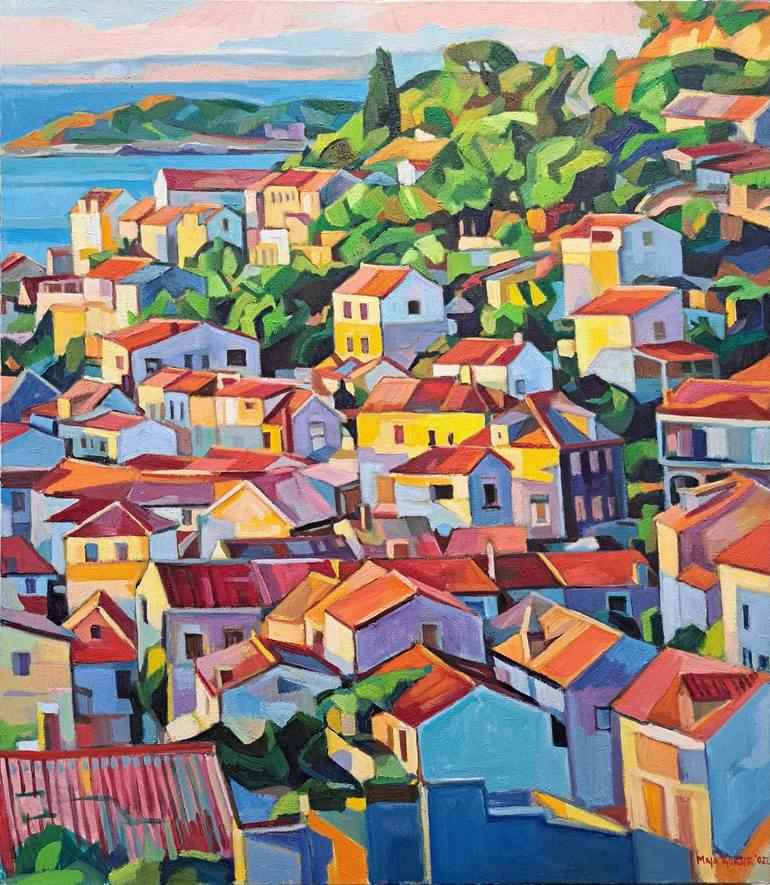 ©"On the Hill" oil on canvas, Maja Dokic Mihajlovic
©"On the Hill" oil on canvas, Maja Dokic MihajlovicA very different way of expressing the cube here!
Maja was obviously captivated by this view from the hill - how all the buildings formed an intricate pattern of cuboid shapes, with warm colors in the sunny parts, and cool in the shadows.
Even the way she's painted the trees contributes to the whole angular feel of the painting.
It's a lovely example of how if we stay alert and use our artist's eye, geometric forms might pop up anywhere in our everyday lives, inspiring us with an idea for a new painting.
The Pyramid
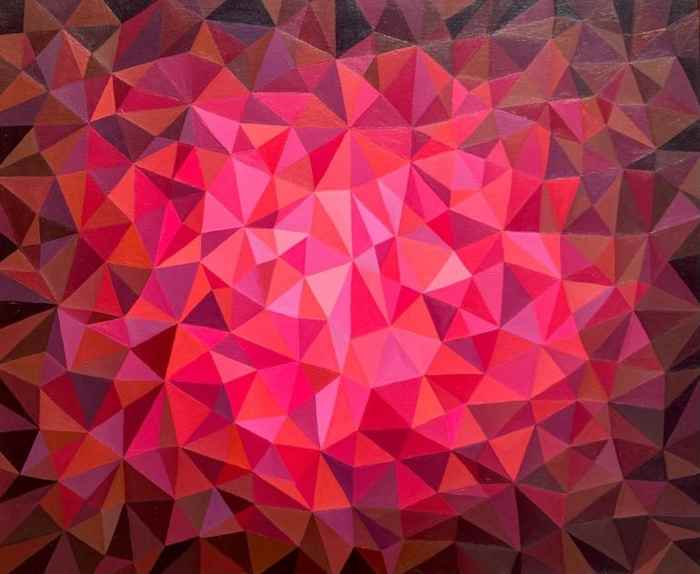 ©"Red Ruby" acrylic on canvas, Maria Tuzhilkina
©"Red Ruby" acrylic on canvas, Maria TuzhilkinaThis painting by Maria Tuzhilkina is an abstract based on the idea of a jewel - a perfect vehicle for Maria's love of bright colors and geometric forms.
See how she's painted the many pyramid forms in different tones of reds and mauves, dark to light? The light mostly catches one side of the pyramids which makes them look angular and three-dimensional.
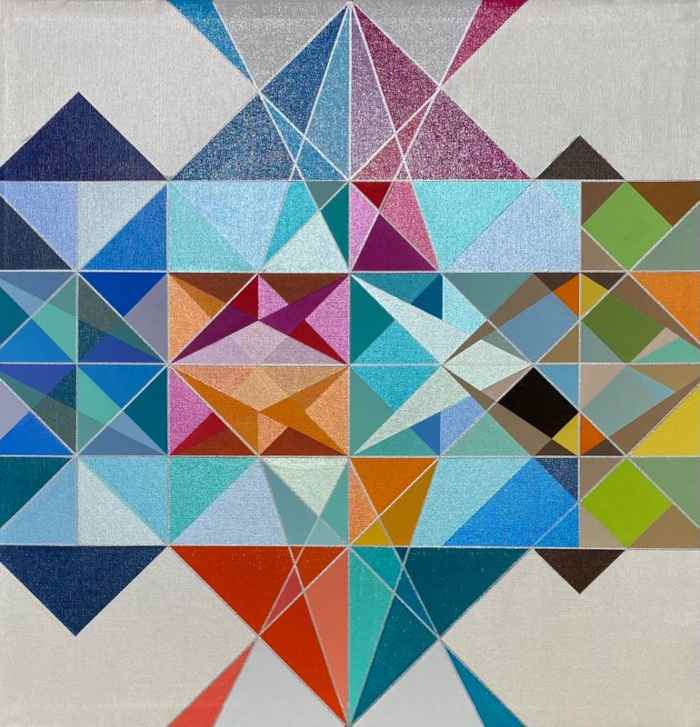 ©"Dazzle" acrylic on canvas, Gene Lang
©"Dazzle" acrylic on canvas, Gene LangGene Lang takes the idea of light catching the facets of a jewel a step further into abstraction. He formalises the geometric shapes, and using color in light to dark tones, gives a gem-like quality to the painting.
See the way he's included the shape of the canvas in his overall design? He makes a satisfying composition of triangles, squares and pyramids which are then enclosed in another square - the canvas. Nice!
 Photo of a snowflake.
Photo of a snowflake.Individual snowflakes are difficult to see with the naked eye, but the macro photo above reminds us what other astounding and beautiful geometric forms can be found in nature.
We're told that there are infinite possibilities for the forming of snowflake shapes, making the chance of two identical snowflakes extremely low. But, amazingly, they're mostly all hexagonal!
What could you do with that idea? Imagine a large square canvas and a 6-sided hexagonal snowflake painted in your favourite colors? Wouldn't that look great?
Or even a whole series of small individual snowflake canvases displayed together on your wall?
You could choose all cold colors - or even hot, why not? You're the artist, it's your choice!
Don't know how to draw a hexagon?
Click on this youtube link to find out
The Cone
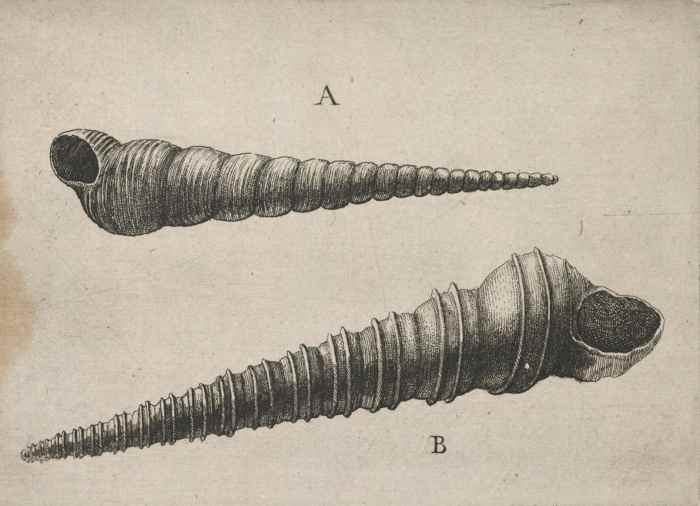 "Shells" etching, Wenceslaus Hollar 17cent
"Shells" etching, Wenceslaus Hollar 17centThis etching by Wenceslaus Hollar shows us again how the natural world can surprise us with beautiful geometric forms.
See how Hollar emphasised the 3-dimensional effect of the cone by curving the contour lines around the form? And by his meticulous use of shading? Also, notice how he's portrayed little areas of reflected light at the bottom of the shells.
Of course you could also achieve the whole effect with graphite pencils if you haven't got an etching studio handy!
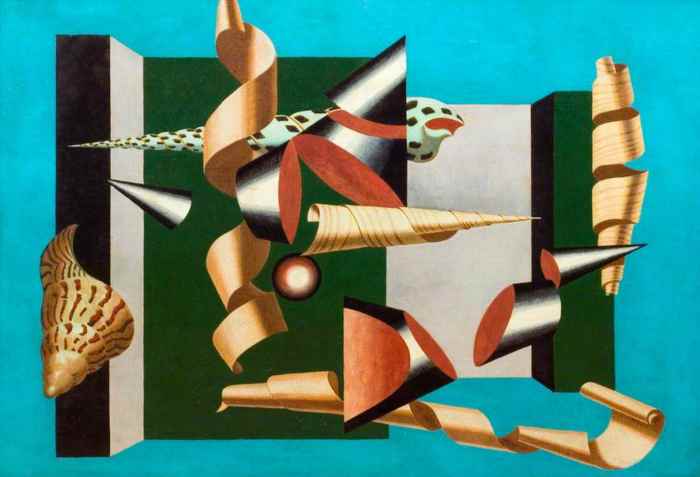 "Composition - Cones and Spirals", Edward Wadsworth 1929
"Composition - Cones and Spirals", Edward Wadsworth 1929Here's an interesting take on geometric form in art. Edward Wadsworth was obviously intrigued to see the cones and spirals that occur in seashells, and expanded the idea into an abstract painting.
Did he cut and coil pieces of paper and hang them up to paint from? (My wood-working son says they look like wood shavings to him!) Then the seashells were added into the composition.
But what about that solid cone cut into chunks? How interesting to see that a cone cut into slanting chunks forms ellipses, not circles. How fascinating geometry can be!
The Cylinder
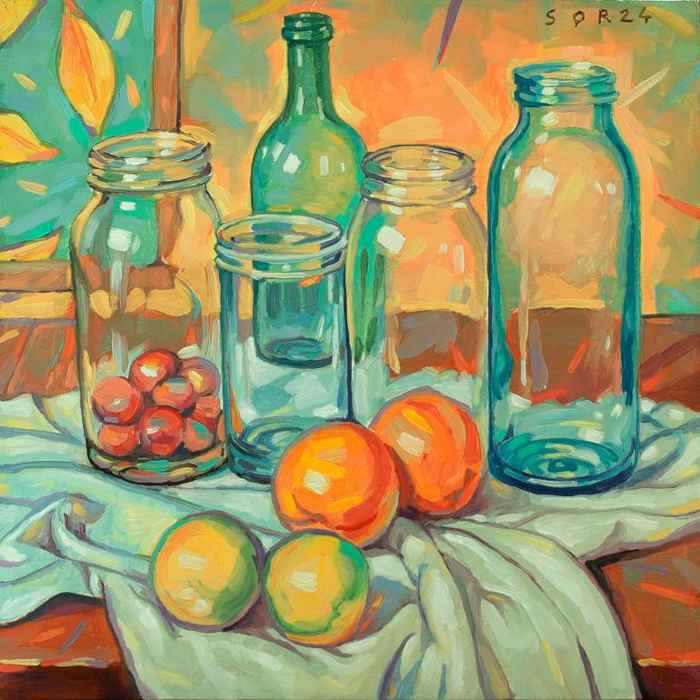 ©"Glass Jars and Fruit" oil on MDF, Juan Siquier
©"Glass Jars and Fruit" oil on MDF, Juan SiquierMore ellipses on display in this still life by Juan Siquier! This is how he makes the jars look cylindrical - it's difficult to show solid form when a cylinder is transparent, but all those ellipses do the trick!
Also of course, he's put in the all-important highlights on the sides of the glass helping the illusion of roundness.
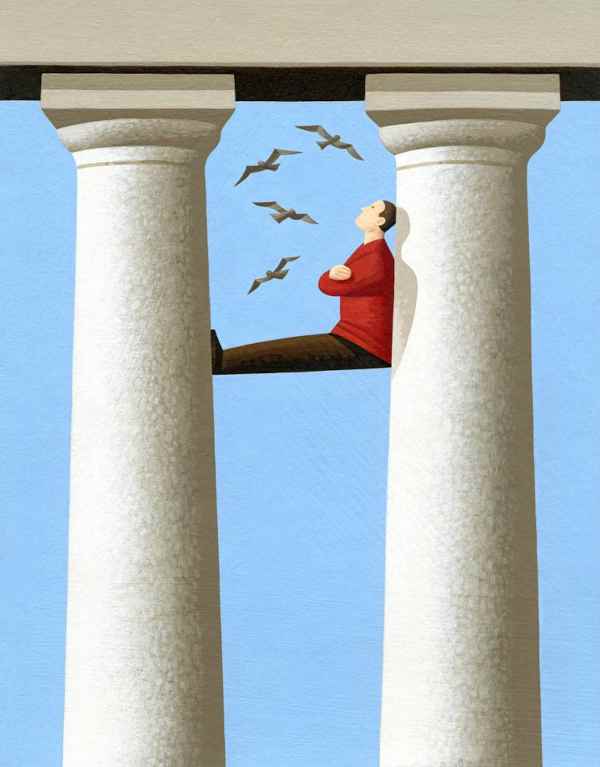 ©"Midlife Crisis" acrylic on paper, Nik Ad
©"Midlife Crisis" acrylic on paper, Nik AdNik Ad is renowned for his humour and concept art - this one certainly made me chuckle!
I was pleased to find this painting for you, not just for the laugh but for the way he's painted the pillars - a perfect example of how to make cylinders look 3-dimensional with a bit of skillful shading.
Art doesn't always have to be deadly serious, does it? If you like humour and have a talent for making people laugh, why not use it in your art? You could use a geometric theme!
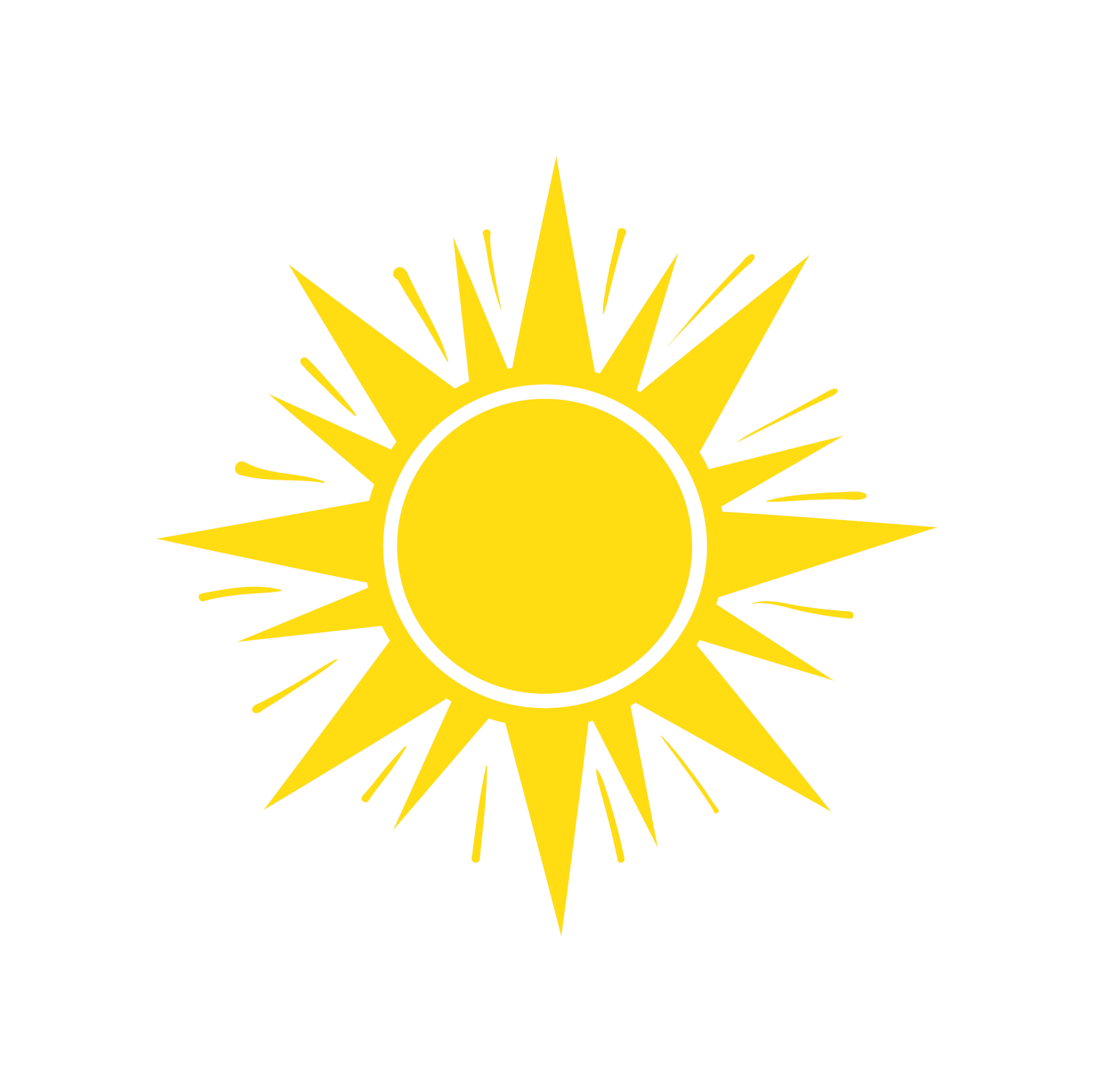
Quick tip: When drawing a jar or bottle which is slightly below your eye-level, make the ellipse at the top shallower than the one at the bottom. You'll see the difference in your subject if you look carefully.

(Of course, if you want to deliberately distort those ellipses for artistic reasons, go right ahead!)
Geometric Form in Art - Your Way!
So there we have 10 artists all showing their different takes on geometric form in art.
I've really enjoyed 'spending time' with them and seeing geometric forms through their eyes, and I hope you have too. Which ones light the artistic spark for you?
Do you like the realistic ones? How about trying a surrealistic work? A still life? What about the view from your window? Will you see the views on vacation with new eyes?
Get out your compass and ruler - let's be honest, didn't we all love making those geometric patterns at school?! Now you know how to make them into real art!
Do you have a talent for making people laugh? Lucky you! Combine that talent with your artistic talent and see what you can come up with.
Whichever painting sparks you off, don't wait! (Leave those dirty dishes - you've got much more exciting things to do!)
Go to your artist's space, grab paints or drawing materials right now!
And as always, I'm wishing you the best of Good Luck, artist friends!
All contemporary artists on this page can be found at saatchiart.com
Wenceslaus Hollar and Edward Wansworth are at wikiart.org
Kazuaki Maitani 's website: cosmictexture.web.fc2.com
Robert McPartland's website: robertmcpartland.com
Maja Dokic Mihajlovic can be found at: instagram.com (profile: dokicmaj)
Maria Tuzhilkina's website: mary.tuz-art.tilda.ws
Juan Siquier's website: juansiquier.com
Like this page? Click the icons to share it.